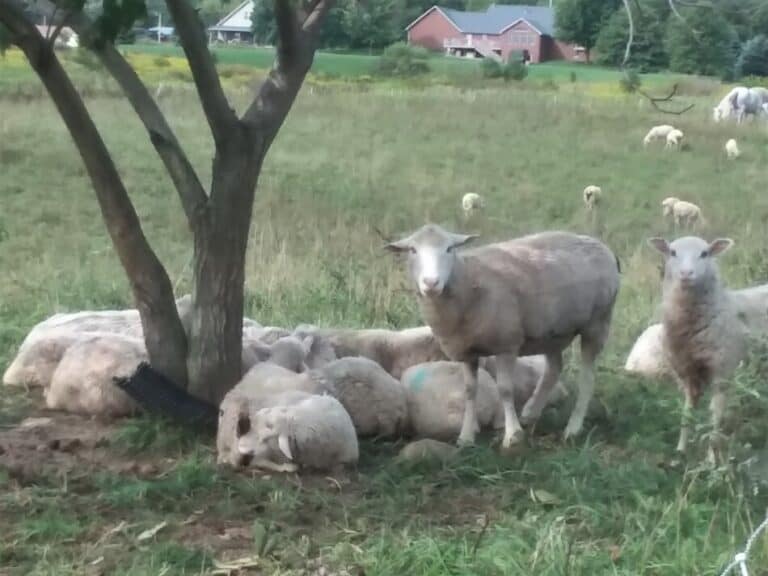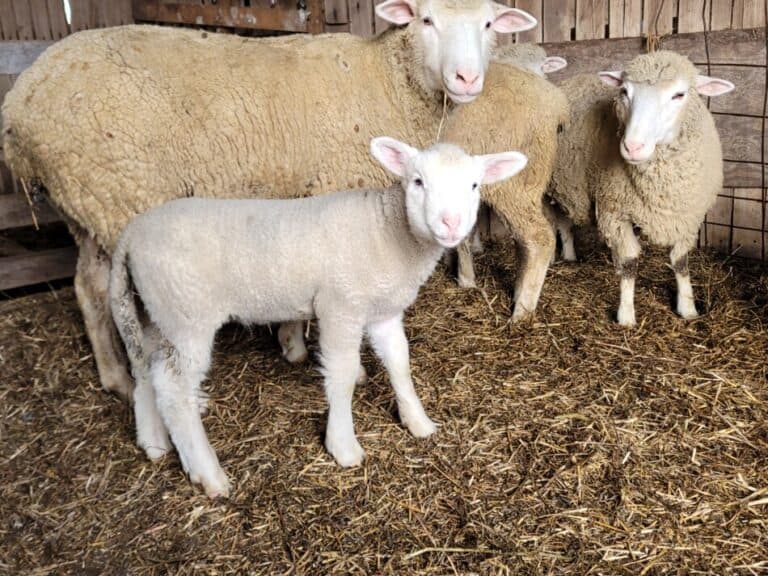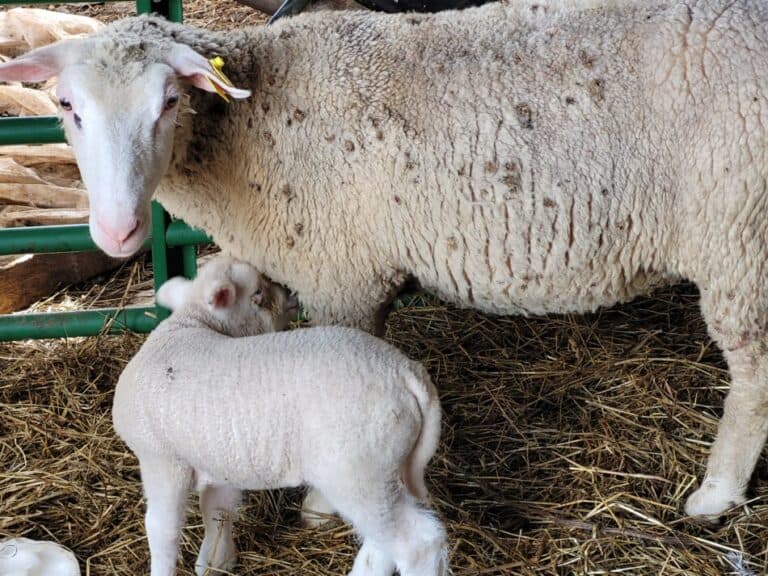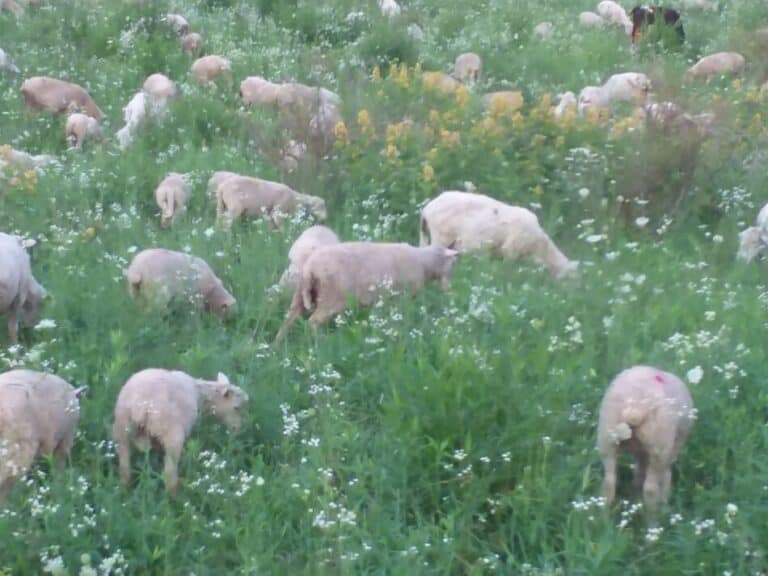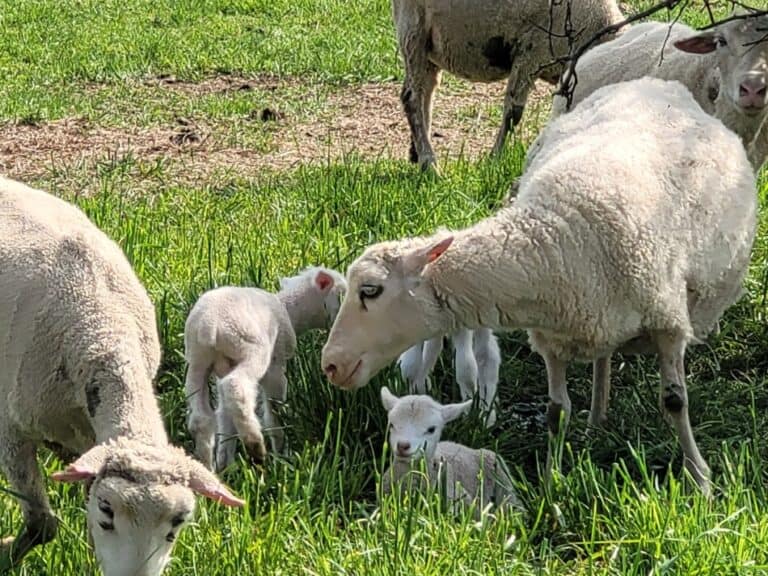Why Do Farmers Have Lambs In The Winter?
Lambs are supposed to be born in the spring, right? This way the lambs can spend the summer outside with their moms, eating grass and enjoying the sunshine.
So why do you see some sheep with lambs that were born in the winter? In the winter, it’s cold and there’s no grass to eat, so what’s going on here?
Lambs born in the winter will spread out the income and the work for the year, supply lamb to consumers at a time when demand is higher and make better use of farm buildings.
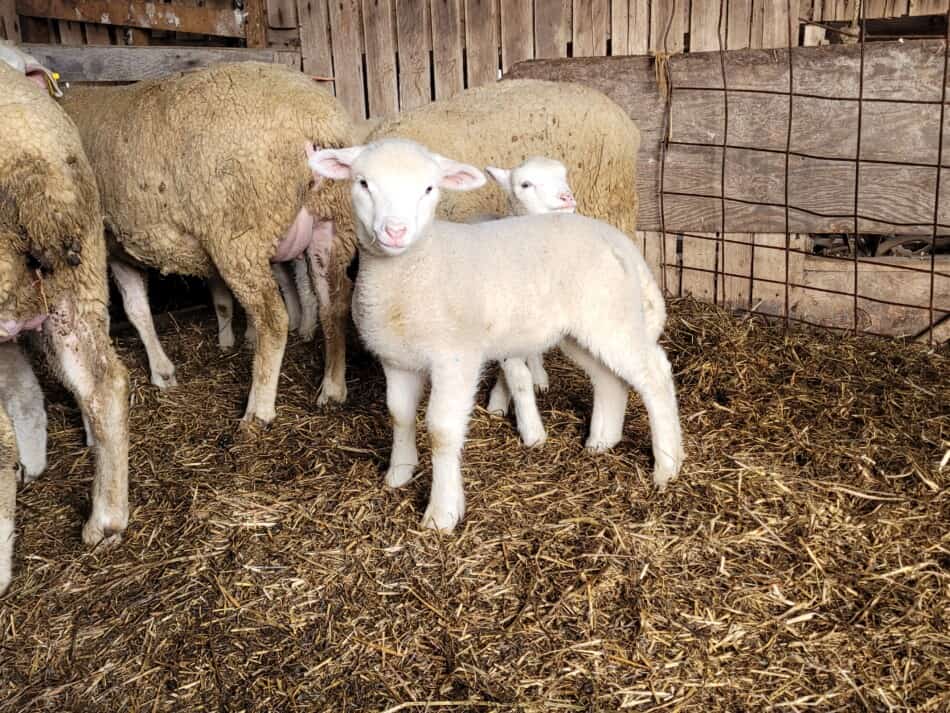
Certain sheep breeds can breed year round
Most lambs are born in the spring but lambs can be born anywhere from late winter to early summer from sheep with a normal breeding season, depending upon when the farmer puts in the ram.
Certain sheep breeds, but not all, can breed year round. For off season lambs, lambs that are born in a season other than spring, the sheep needs to be from year round or extended breeding season genetics.
So the first potential answer here is that the lambs are born in the winter because they can be, not all sheep farmers have that option due to the genetics of their flock.
For instance, Dorset or Polypay flocks should be able to breed just about any time of year.
Are Lambs Only Born In The Spring? goes more into lambing seasons and why most lambs are born in the spring.
Confinement sheep farms lamb can lamb in winter
Confinement sheep farms, farms where the sheep are kept in a building, tend to split the flock and lamb groups of ewes throughout the year, for example start a new group lambing every three to four months.
Since the flock is kept inside, the sheep chosen for this type of operation tend to be year round breeders so the farmer gets more use out of the building.
With the sheep inside, weather is less of a problem for newborn lambs so these flocks can have lambs in the winter as one of their normal lambing times.
The other aspect of lambing to remember is that ewes with lambs require better feed, which in the case of sheep inside, the farmer provides to them.
If the sheep were getting their own feed, like in a pasture situation, then the good feed required to grow the lamb during the last part of gestation and especially to milk is not available to the ewe in the winter.
This is why confinement sheep can lamb in the winter, the sheep are being fed rather than counting on the ewe to feed herself on high quality grass, which is only available during the growing season.

Show lambs are born in the winter
Show lambs, the kind you see in market classes at the fair, are born in the winter, generally January or February. They need to be born early in the year in order to be large enough to compete well at the show.
Lambs born when many commercial flocks are lambing, which is going to be more like March, April, May, would be too small to show in the market lamb classes.
For example, in my state, Ohio, county fairs start up in mid June. Anyone showing market lambs at this fair would need to get a lamb born in January or so.
By mid June, our oldest lambs would be 2 months old, with the majority of the lambs being closer to 1.5 months old. That’s no where near old enough or big enough to be a market lamb for the fair!
Any farmers around here that sell market lambs for the fair are planning on a lambing season in January, which is smack in the middle of winter, but is the lambing time needed for well grown show lambs.
Some lambs are unplanned
Sometimes the winter lambs are unplanned. Sheep start coming into heat when the day length is getting shorter. Anytime that a ewe is in heat, she can get with a ram or the ram can come to her.
If these two get together, you’re likely to have lambs in five months. If this unplanned breeding is anywhere from August to late September, you will have lambs in the winter.
Best Breeds Of Sheep For Meat is an article I wrote to give you an idea of some of the sheep breeds commonly raised for meat. Some of these sheep produce winter lambs, some do not.
Winter lambs spread out income
For any farmers that have winter lambs as a part of their normal schedule, one of the main positives is that they will spread out both the work and the income for the farm.
Winter lambing as one of multiple lambing times per year, allows the farmer to have more lambs for the year, but less lambs at one time, which spreads out the work.
Having multiple lambing groups also spreads out the income for the year.
Many sheep farmers with smaller flocks like to sell the years worth of lambs in one group, which can be good or bad depending upon price! Multiple groups means multiple sale days, as well.
Cornell Small Farms has an article on the economics of winter lambing, Winter Vs. Spring Lambing if you are looking for more of an in depth article.
Demand for lamb to eat is year round
A final reason for winter lambs is that demand for lamb to eat is year round, but with lambs born mainly in the spring the lamb supply is high in the late summer to late fall and low the rest of the year.
Lambs born in the off season, like winter, would be ready to market at different times of the year which gives the farmer and the consumer more choices.
For more of my articles on lambs consider reading:
